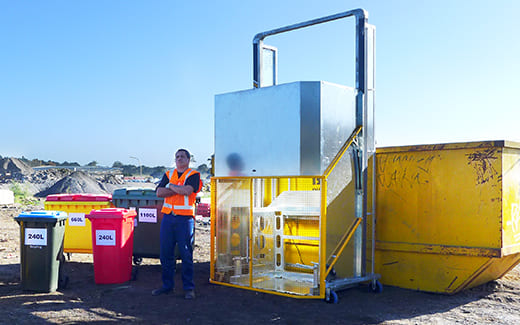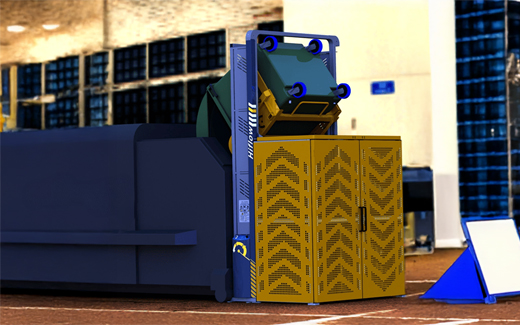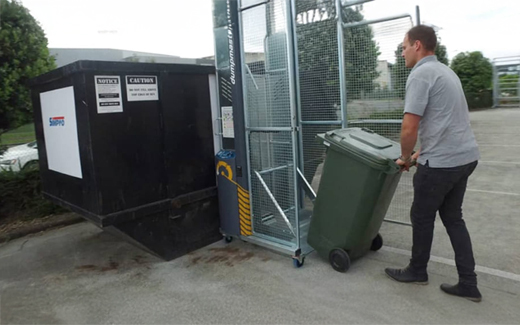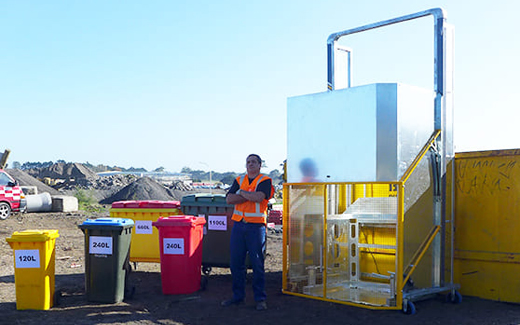As the world’s population continues to grow, one of the many challenges that businesses and local authorities have to face is waste disposal. More people means more waste, which calls for an efficient way to transport and eliminate that waste safely.
The first issue is to collect the waste in a central repository. But repetitive lifting and handling means people are at risk from a health and safety perspective.
Filled bins are difficult to manage at the best of times, but when you need to lift the bin to empty it into a larger container, then the risks begin to outweigh any benefits.
It makes much more sense to use a bin lifter to do the job faster and more safely. There are three reasons behind that:
Waste disposal becomes much easier
Bin lifters are designed to lift large loads of rubbish and waste items with ease. Using one makes the job of the waste collection workers much easier, as they can collect more rubbish at a time and thus service more households or business establishments at one go. Bin lifters improve operational efficiency — thus saving time and cost.
They can guard against health hazards
Waste needs to be collected and disposed of at frequent intervals to guard against pollution, disease transmission, and exposure to hazardous materials. This means that the rubbish disposal teams need to be on regular duty to maintain cleanliness.
Using a bin lifter reduces the exposure by the workers to the waste items, enabling them to operate in a cleaner environment. With the lift and tip functionality of the bin lifters, they are able to tip full bins of rubbish directly into a skip in seconds, thereby eliminating the need for manual contact and keeping the workers safe.
Plus, bin lifters reduce the manual effort the workers need to put in and protect them from potential lifting related injuries.
Lifters are cost-efficient
Investing in a sturdy bin lifter allows for the lifting and transportation of massive loads of rubbish at one go (up to 600 kgs depending on the make and model). This eliminates the need for multiple rubbish collection trips, introduces the option of using larger collection bins, and can reduce overheads.
Now that you know why investing in a bin lifter is the best way to manage waste disposal, here are four things to consider while choosing the right bin lifter for your business:
1. Decide on the bin size
Different bins have different capacities, ranging from 120 litres to 1100 litres or even more, depending on the manufacturer. The right bin depends on the industry you operate in. For instance, small or medium-sized lifters will work best for school catering.
Manufacturers are likely to have larger requirements and it is recommended to assess the weight and capacity of the waste created and then identify a suitable bin.
Now the weight of the bin can be heavier as the physical lifting element has been removed, larger bins may be more appropriate.
2. Decide how many times a day you will be tipping
If you are only planning to tip rubbish a few times a day (between 2 and 10), investing in a bin lifter with assisted lift facility (involving some manual effort) is usually enough.
For more rubbish tips per day, it is advisable to invest in a hydraulic-powered bin lifter that can tip rubbish all day without human intervention. This eliminates the physical strain on the waste collection workers.
3. Determine the height of the skip bin you will tip into
Most skip bins or dumpster bins have a height ranging between 1500mm and 2100mm. Different models of bin lifters are compatible with different heights, which you should check for before buying.
Our heavy-duty mobile bin lifter, Dumpmaster®, can safely empty any bin at extended heights using the electro-hydraulic mechanism.
4. Know the work area and space requirements of your lifter
There are two main kinds of bin lifter – full-swing and lift-and-tilt. Full-swing varieties involve a complete swing action, as the name suggests, which means that they need more space and height clearance.
Thus, they are not suitable for use in places with pedestrian access or with low ceilings such as underground basements or car parks. On the other hand, the lift-and-tilt model keeps the lifting motion limited to within the bin lifter’s footprint.
This makes it more suited to use in places where pedestrians will be around, such as school areas or retail centres.
Different types of waste (e.g., general, clinical, hazardous) require different handling and disposal methods, and using colour-coded bins can facilitate that. This system minimises the risk of cross-contamination and bolsters the efficiency of waste management operations.
Wrapping it up
Gain access to industry-leading lifting and tipping equipment today! Please contact us for further information.




